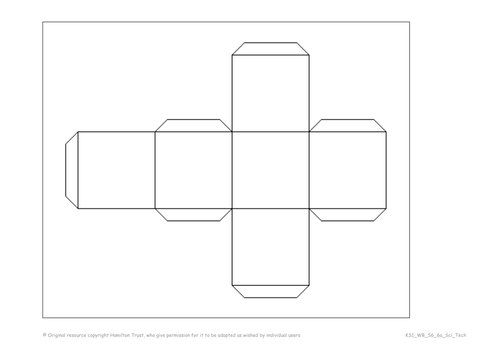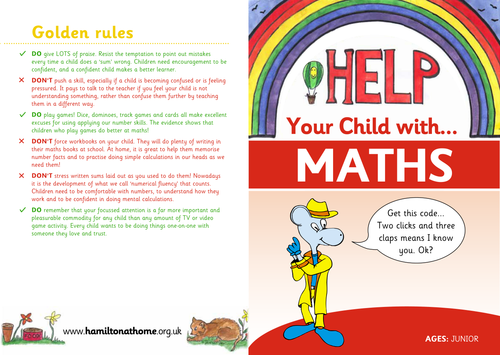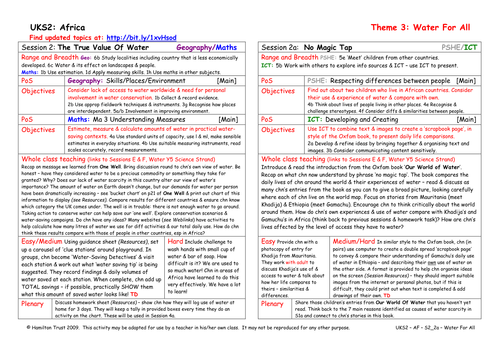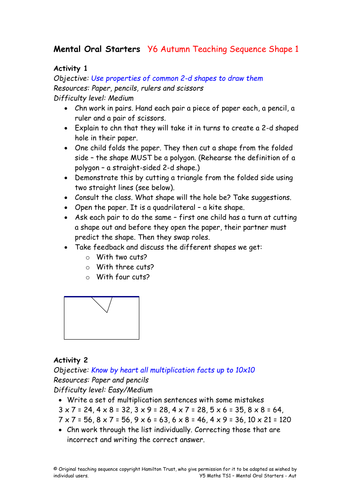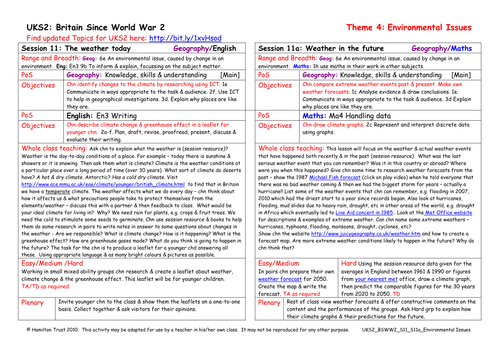
550Uploads
10013k+Views
11623k+Downloads
Mathematics

Shopping Basket
Look at products that would be on weekly shopping list, consider the different ways in which these were sold – less packaging. Discuss equivalents between imperial and metric measurements and money. Children convert prices or sort foods into then and now.

Infant Maths Leaflet
A leaflet for parents which outlines the type of Maths being taught in Key Stage 1 classrooms.

Make A Box
Moving on from the last session, children explore how boxes are made from nets by taking apart packaging boxes. Then using a pre-prepared net, children make and design their own boxes.

Maths Y5 Spring Teaching Sequence 5
Fractions, Decimals, Percentages, Ratio and proportion (five days).

The True Value of Water
The global well is in trouble – not enough water to go around. Take action to conserve water! Children use ‘clue stations’ to discover water-saving tips, working out how much water they would save. They are set homework to log water use at home over 3 days.
Suitable for years 5 and 6.

Teaching Presentation: Tell time to nearest minute: am/pm ( Year 4 Measures and Data )
This presentation provides three days of teaching that cover the objectives:
Telling time to nearest minute; am and pm
It includes starter activities, whole class teaching, group activities, practice sheets and mastery questions. It can be used on a variety of interactive whiteboards.
Day 1 Teaching
Launch ITP Tell the time. Recap telling the time by moving the minute hand around clock at 5-minute intervals. Establish that there are 5 divisions between the numbers, each of which represents 1 minute. Count marks with children to tell time to the minute. Distinguish am and pm as morning and afternoon/evening.
Day 2 Teaching
Imagine school started 40 mins later. Find all the activity times, now 40 mins later, crossing the hour as necessary. Record times in both analogue and digital times, and work out time intervals.
Day 3 Teaching
Show children that to calculate time intervals, we can use Frog to find the difference between times like finding a difference between 2 numbers on a number line. Model finding time intervals using Frog, crossing the hour, using both analogue and digital clocks.
This teaching is part of Hamilton’s Year 4 Measures and Data block. Each Hamilton maths block contains a complete set of planning and resources to teach a term’s worth of objectives for one of the National Curriculum for England’s maths areas.

Maths Y2 Autumn Teaching Sequence 3
Number facts to 20, equality [3 days].
Children revise partitioning pairs up to and including ten, then 20, recording the corresponding addition and subtraction sentences. They use images such as the 20 bead frame and ‘slidy’ box’ cards to reinforce the idea of an empty box in number sentences. They use the idea of equality and the image of the number balance to help them to write number sentences such as 7 + 3 = 6 + 4.

Mental Oral Starters :Y6 Aut Sequence S1
Mental and oral starters for Year 6 Autumn Teaching Sequence S1.

Weather In The Future
Discuss extreme weather events from present and past. Using data they have been given about England’s weather over the past 30 years, some children draw a climate graph and predict what will happen in the future. Other children create a weather forecast for 2050.

Rising Population
Explain that the population in Britain has been rising steadily since World War 2. This is not only due to immigration, but also to improved health services. Discuss the birth of the National Health Service. Children draw graphs to show population growth.

Eye On The Ball
With the World Cup in full swing both in school and in South Africa it’s time to become a statistician mathematician! Children use real data collected on their World Cup wall charts to find answers to their own questions.

Can You Carry It?
How hard can it be to carry water? Children find out the facts and discuss images of different ways of carrying water before trying themselves. Through activities on the playground children experience that water is heavy and challenging to carry over distances.
Suitable for years 5 and 6.

No Magic Tap
Find out about children’s experience of water all around the world using Oxfam’s Our World Of Water and compare with life in the UK. In a similar style to the book, children create a ‘scrapbook’ page comparing their lives with Khadija or Gamuchu from Africa.
Suitable for years 5 and 6.

Mental Oral Starters :Y3 Aut Sequence 3
Mental and oral starters for Year 3 Autumn Teaching Sequence 3.

World United
260 million people can’t be wrong! In this session children discover that there are few differences between the sports they like and participate in and those that children in Africa enjoy, before experiencing some traditional African games.

Revise fractions; find unit and non-unit fractions of amounts - Teaching Presentation - Year 4
This presentation provides three days of teaching that cover the objectives:
Count in 1⁄4s, 1⁄3s, 1⁄8s and 1⁄10s saying equivalent fractions.
Find unit and non-unit fractions of amounts.
It includes starter activities, whole class teaching, group activities, practice sheets and mastery questions. It can be used on a variety of interactive whiteboards.
Day 1
Count in thirds along a 0-5 line marked in thirds. Point at a mark; children write the number. Repeat with a line showing 1/4s. Stress mixed numbers, e.g.one and three quarters; equivalence, e.g. one and a half is the same as one and two quarters. Repeat for tenths.
Day 2
– Use a picture of a chocolate bar with 30 pieces to show how to find 1/5, 3/5, and 4/5 of 30, then 1/6 of 30 and 5/6 of 30. Repeat with 50 pieces to find 1/10 and subsequent non-unit fractions, e.g. 3/10.
Day 3
Sketch a pizza and divide it into eight equal sections. If 16 bits of salami are distributed equally, how much on each slice? Show that 1/8 of 16 is 2 (16 ÷ 8); then derive other facts: 2/8 of 16 = 4, 3/8 of 16 = 6, etc. Show that 4/8 is 1/2. Demonstrate using a bar model and repeat with 24 pieces of tomato.
This teaching is part of Hamilton’s Year 4 Decimals and Fractions block. Each Hamilton maths block contains a complete set of planning and resources to teach a term’s worth of objectives for one of the National Curriculum for England’s maths areas.



